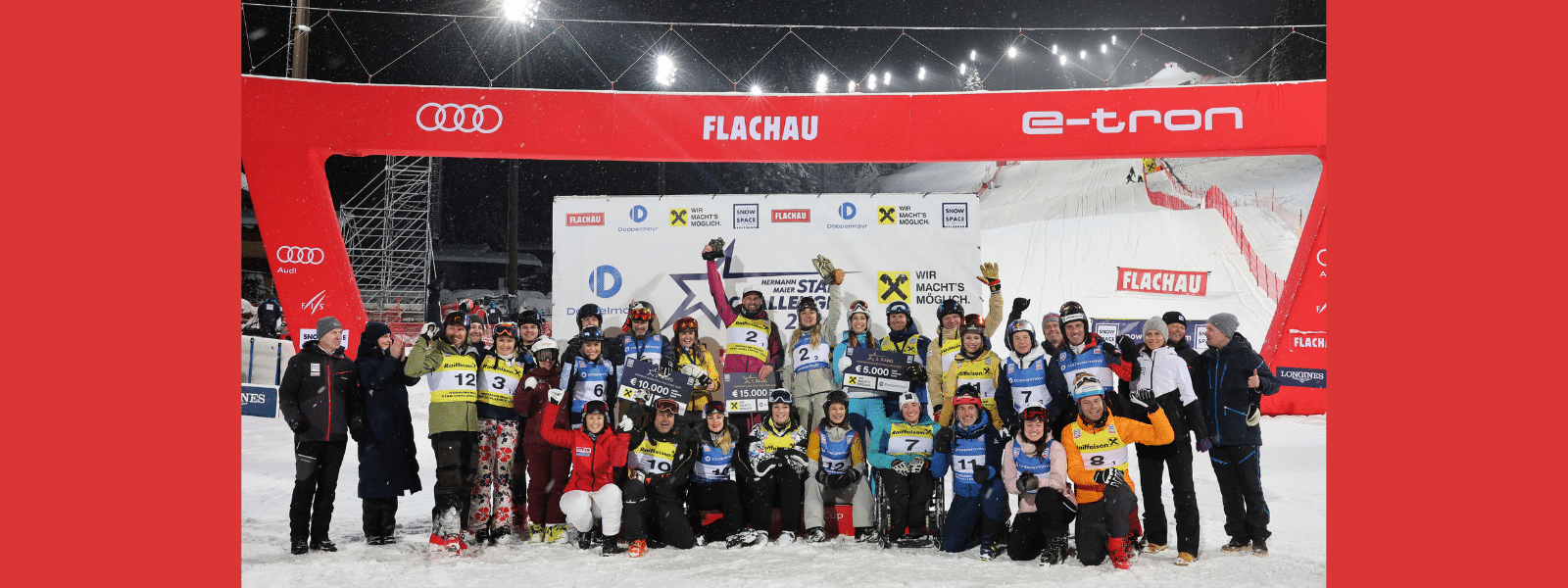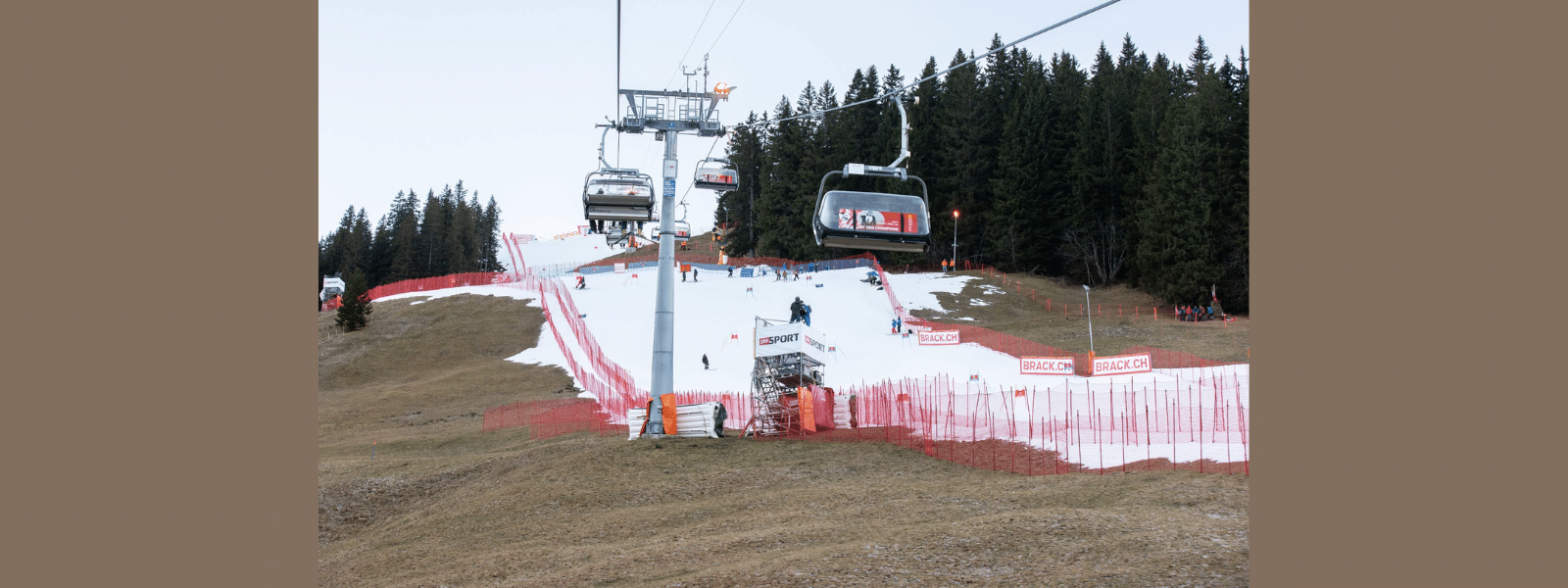Lewis: Making failure your friend
There is no worse feeling than having a bad ski race, especially after having high expectations and a great training week prior. What most athletes fail to realize is that there is no better opportunity to learn than on those days. Embracing failure is critical for all athletes, but especially for ski racers. Everything about ski racing is tough. It is held in an outside arena where the weather and conditions are changing constantly. It is an individual sport so you are constantly feeling alone out there. There are equipment failures, the constant threat of injury, freezing temperatures, inevitable delays, frozen toes, and super-sized performance anxiety. And finally, there is only one winner in a race, so by definition, every other racer failed.

The good news is that the only thing standing in the way of every race being something positive is your attitude. That’s it. That crazy brain that acts as our “master controller,” often operating with a personality disorder that swings from wildly over-confident to extremely insecure, is in charge of everything. So let’s train it how to turn a tough day into a positive day.
Accept tough days
It’s inevitable … you’re going to have some really tough days out there! At this point how surprised can you be when you pre-release, when a rut sends you flailing off course, or when you miss the last gate? It happens almost every race to someone.
Accept that there will be days, weeks or even months when nothing goes right. It is part of sports, and life in general, so accept the fact that your number will come up every now and again in this sport. Knowing that things won’t always go your way arms you with the attitude to punch through when it does happen. If you think of it as a challenge to be overcome, instead of the end of your ski racing career, it makes it a whole easier to face head on.

Olympian Bryce Bennet realizes that struggling is a necessity and an opportunity. “If you have no struggle, you should be worried,” he said. “Not only should embrace the struggle, you should seek it out in many aspects of your life. The struggle gives you purpose and the opportunity to learn and grow.”
Look at the positives
Before you start to break down what went wrong, take some time to add up all the things that went right and you’ll get to the conclusion that it wasn’t as bad a day as you thought! Did you inspect well and know the course inside and out? Good! Were you focused at the start and attacked the first few gates? Great! Did you ski a section well and crush that one rhythm change that tripped up so many others? Awesome! Every day has a lot of things that go right and those things are important to acknowledge.
When I was a U16 trying to qualify for Nor-Ams, I would go into every event thinking I would have an incredible race that would propel me to the next level. But, for almost two years I could not put it all together and qualify up – made even more depressing by the fact that most of my teammates did! I had to look deep into each race experience and find the positives and use those little victories to keep my motivation high.

How you frame your experience can affect what you take out of it. US Ski Team speed skier Jackie Wiles has faced her fair share of injuries and disappointments, but says, “I believe in looking at life with a positive outlook and always seeing the glass as half full as opposed to half empty. The mind is incredible in a sense that you determine your own happiness and outlook on life and experiences.”
Look yourself in the mirror
Before you blame your bindings, the weather, or your coach, take time to ask yourself, “Did I do everything in my power to make it a great day? Did I execute the plan correctly?” Chances are that you have to take some of the blame as well. The greatest athletes take ownership of everything that happens. They first look at themselves, before placing blame on other people or circumstances.
Doing that empowers you to solve the problem and be that positive change needed to go forward. You can’t control the weather or what others do, but you can change the way you prepare and execute your next race. The knowledge that YOU are in charge of how the day pans out will inspire you to work harder and take control.
This may be the toughest lesson to learn. All I wanted to do after a bad result was to blame something or someone. I did not want to face the fact that I was responsible for my bad result, but ultimately I was in some way. Coaches will want to help you with this by pointing out things you can do better next time, but for me, I needed to first take some time to face my faults alone before hearing it from others. After breaking it down in my mind, I could then make a plan with them to go forward.
Olympic Medalist Tina Weirather admits that struggling with failure can be tough. However, she emphasizes that how you deal with those setbacks is the critical part, and the key is to be your own coach.

“I think it’s not the struggle itself that makes you better, but how you handle struggle. If you are able to analyze yourself, you are able to learn. That means that you have to be honest with yourself. Sounds easy, but that is the most important part. No coach in the world can coach you the way you can coach yourself. I think it helps a lot to actively analyze yourself, like asking yourself what did I do wrong, what am I really good at and how can I use that. How can I get better? I try to coach myself as if I was another person.”
Learn from what happened
From every disappointment comes a lesson. There was a reason you failed so figure it out and work hard to make sure it never happens again. Write it down in your Journal, underline it, and start to solve it immediately. The race is only a waste if you fail to learn something from it.
One problem I hear a lot from ELITEAM athletes is that they are often tired on race day from staying up too late the night before. That is an easy thing to fix. Plan out your race weekend to the minute and start preparing on Thursday for a Saturday race. Get your equipment organized early, work out your nutrition plan, and make sure you are IN BED relaxed at 8:30pm and not watching something on the computer with four of your teammates until midnight laughing and eating popcorn and twizzlers!

Sometimes, however, it is not a simple process to identify the problem. Bryce Bennett acknowledges that ski racing can be a complicated sport and has this advice:
“The hardest part is identifying what is wrong in the first place,” Bennett says. “Ski racing has so many variables and it’s difficult to make decisions with all those variables. There is nothing worse than making no decision, so use all your understanding of the sport and make the decision and commit to it. If it works great, if it doesn’t, then it’s back to the drawing board, but at least you’re back at the drawing board with more information than when you started.”
Continue to work hard
Give yourself time to be mad, maybe an hour or two, but then it is time to look forward again and get back to work. Despite the setback, you are now armed with a new goal and a problem to solve. With the help of your coaches you can put together a plan of attack so by the time the next race rolls around, you will be armed with new knowledge, new skills, and a better chance to be successful.
If you are a racer that is committed to being the best you can be and pursuing your goals, then this is the fun part – getting back out onto the training hill with more information and a new goal. Sure, it wasn’t that fun to straddle last race, but now you know that you need to work on your line and timing so you avoid straddling again!

The pains of ski racing are many and this sport offers endless opportunities to “fail”. As World Cup winner Alice McKennis put it, “The struggle is real! At some point (or many points) in every athlete’s career they are going to struggle. It might be a huge struggle with a severe injury or just a day to day struggle of trying to improve into a faster racer.”
With all the struggle, the question then becomes, what are you going to do about it? Alice sums it up by saying this, “The only way to get through these struggles is to keep working hard. At times it can be really tempting and easy to give in and to give up. Sometimes it feels like you can’t take any more bad hits! If you keep fighting and keep working, at some point you are going to get over the “hump”. You will be on the other side of the struggle and be able to look back at yourself at that difficult point and be proud of how you kept working and pushing. Those types of accomplishments can often be more satisfying than a victory! You learn so much about yourself and your inner strength to fight back from those failures and struggles. Learning about your power to fight and overcome adversity is something that will stick with you for the rest of your life.”
Bottom line, ski racing is an unforgiving sport, but one that is so much fun and will teach you so much about yourself. With the right mindset, you can learn from any day on the hill, whether you have the best day of your season, or whether you blow out every run. Commit to making every experience, no matter how tough, a step forward using the techniques above and you will gain the confidence to push yourself to the limit by making failure your friend.





















